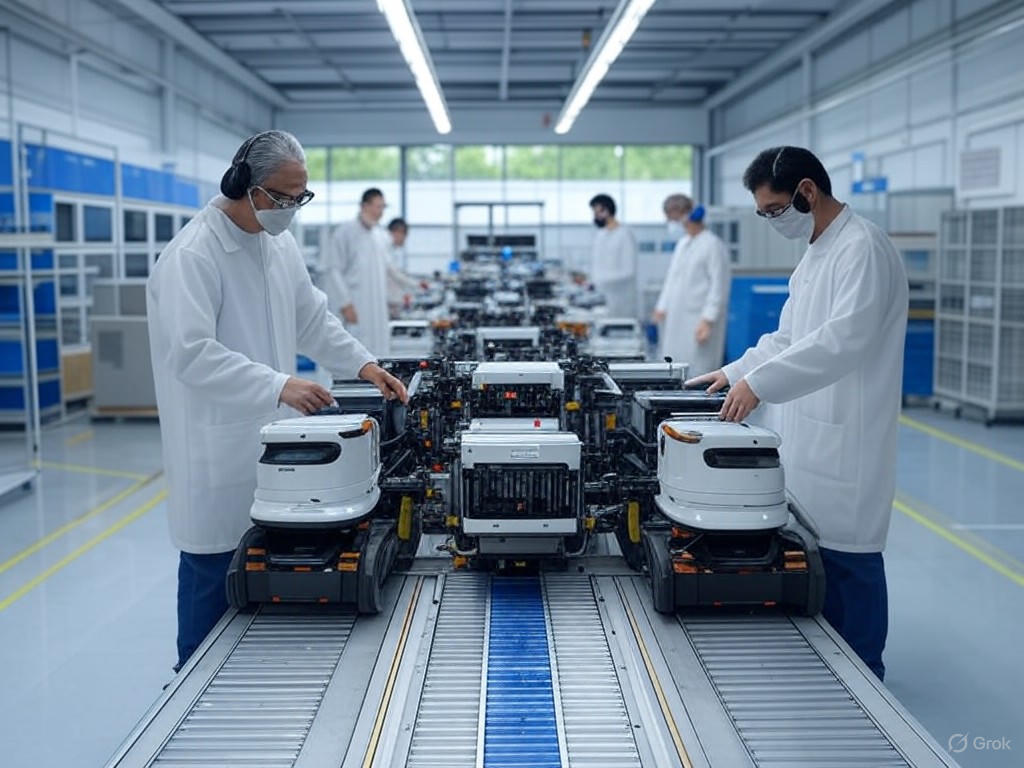
U.S. Manufacturing Booms with Tech Innovation in 2025
The U.S. manufacturing sector is at a pivotal moment in 2025, with technological innovation, workforce dynamics, and supply chain resilience shaping a transformative future. Industry leaders and analysts are optimistic about the sector’s trajectory, pointing to a convergence of digital tools and strategic investments as key drivers of growth. According to insights from the National Institute of Standards and Technology, or NIST, the rapid evolution of manufacturing is fueled by cutting-edge technologies like artificial intelligence and advanced robotics, which are redefining production floors across the country.
At the same time, Deloitte Insights highlights that manufacturers are prioritizing targeted investments in digital and data infrastructure to address persistent challenges such as the skills gap and supply chain disruptions. These investments are not mere upgrades but foundational shifts, enabling companies to harness real-time data for smarter decision-making and predictive maintenance, ultimately boosting efficiency and innovation.
Emerging Technologies Reshape the Landscape
The integration of smart technologies is no longer a futuristic vision but a present-day reality. NIST emphasizes that the adoption of Internet of Things (IoT) devices and machine learning algorithms is creating “smarter supply chains” that can anticipate disruptions and optimize logistics. This tech-driven approach is critical as global uncertainties, from geopolitical tensions to climate-related risks, continue to test manufacturers’ adaptability.
Moreover, discussions at a Washington Post Live event in May 2025 underscored the importance of cybersecurity as digital systems become more integral to manufacturing. Industry experts at the event noted that protecting interconnected systems from cyber threats is now a top priority, with many firms investing heavily in secure cloud solutions and employee training to safeguard proprietary data and operational continuity.
Workforce Challenges and Opportunities
The human element remains a cornerstone of manufacturing’s future, even amidst automation. Deloitte Insights reports that the skills gap continues to be a significant hurdle, with many companies struggling to find workers proficient in digital tools and advanced manufacturing techniques. To combat this, partnerships between industry and educational institutions are on the rise, aiming to equip the next generation with relevant expertise.
The World Economic Forum adds a global perspective, noting that the Fourth Industrial Revolution is not just about technology but also about reimagining workforce roles. Their insights suggest that manufacturers must focus on upskilling employees to handle hybrid roles that blend technical and creative problem-solving skills, ensuring that human ingenuity complements machine precision.
Global Competitiveness and Sustainability
On the international stage, U.S. manufacturers are navigating a complex landscape of trade policies and sustainability mandates. The Washington Post Live transcript reveals a consensus among policymakers and executives that nearshoring—bringing production closer to home—is gaining traction as a strategy to reduce supply chain vulnerabilities and enhance competitiveness.
Sustainability, too, is a pressing concern. The World Economic Forum stresses that manufacturers are under increasing pressure to adopt eco-friendly practices, from reducing carbon footprints to embracing circular economy models. This shift is not just regulatory but also market-driven, as consumers and investors demand greater corporate responsibility.
A Path Forward
As 2025 unfolds, the U.S. manufacturing sector stands at the intersection of innovation and resilience. By leveraging technology, addressing workforce needs, and prioritizing sustainability, the industry is poised for a robust rebound. With insights from NIST, Deloitte Insights, Washington Post Live, and the World Economic Forum guiding the way, manufacturers have a clear roadmap to navigate this dynamic era, ensuring they remain competitive on a global scale.

